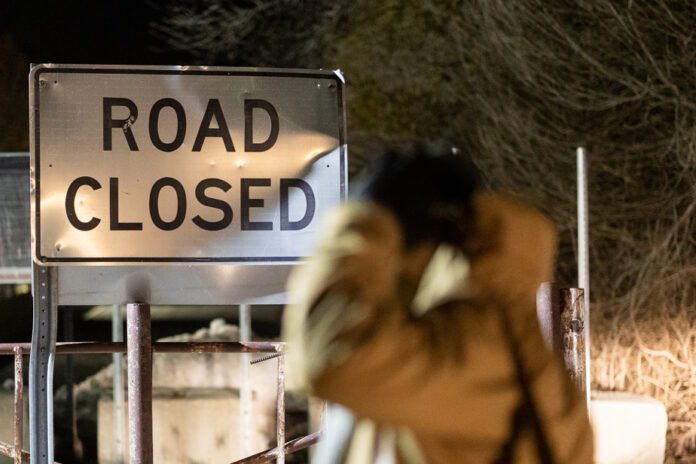Although Roxham Road has been officially closed for a month, asylum seekers continue to try their luck. In all, 264 people have been intercepted between official ports of entry in Quebec since March 25, according to the most recent data from the Canada Border Services Agency (CBSA).
Of course, this is much less than before the expansion of the Safe Third Country Agreement, when we recorded more than 100 entries per day at Roxham Road.
And above all, 185 of these people were deported to the United States because they did not meet the exception criteria provided for in the agreement. But another 78 were deemed eligible to continue their application, or 30%. Only one person withdrew their application and voluntarily returned to the United States.
On March 24, Prime Minister Justin Trudeau and US President Joe Biden announced the signing of an “Additional Protocol” to the Safe Third Country Agreement. This protocol extends the application of the agreement to the entire land border and inland waterways.
Remember that the Safe Third Country Agreement requires migrants to apply for asylum in the first safe country they set foot in: the United States or Canada. Before its expansion, this agreement did not apply to people crossing the border between customs posts, hence the success of the Roxham Road.
Today, migrants who enter through official or irregular routes are stopped and returned to the United States unless they qualify under the new agreement or meet the criteria for an exception (for example: a family member is a Canadian citizen or resident, or the person seeking protection is an unaccompanied minor).
“When people crossing between ports of entry are intercepted by the RCMP or local police, they are brought to a designated port of entry,” said CBSA spokesperson Guillaume Bérubé. That is to say to the Lacolle facilities, from where they will be returned to the United States if they are not admissible.
It depends. If they are arrested within 14 days of entering the country, they are returned to the United States. But if they manage to wait 14 days before making a refugee claim, they are exempt from the new provisions of the Safe Third Country Agreement.
The regulatory change is clear: the new agreement applies to refugee claimants seeking entry between ports of entry if they make a refugee claim “within 13 days of entering Canada.”
It won’t be easy. On the one hand, if migrants manage to remain undetected for 14 days, they will be able to apply for asylum.
But even if they are identified earlier, it is the RCMP who will have the burden of proof and who will have to demonstrate that these people have crossed the border between customs posts without being intercepted in Canada for less than 14 days.
“In my opinion, these 14 days are a message of false hope,” explains immigration lawyer Stephane Handfield.
“What this sends as a message to asylum seekers on the American side is: now cross the border illegally, without getting caught by the police. Stay hidden for 13 days and on the 14th day, raise your hand and apply for asylum and the Agreement will not apply to you. It’s in the protocol. »
In other words, migrants have devious means to obtain asylum in Canada and avoid being turned back, but this entails great risks: first the passage through insecure channels where the smugglers will be more active, then the obligation to evade the authorities for two weeks which forces them into hiding.
Me Stéphanie Valois, president of the Quebec Association of Immigration Lawyers, expects to receive applications shortly. “I haven’t had the ’14 days’ yet, but I’m waiting for it,” she says.
We do not know, but this number will most certainly be lower than that of 2022, when nearly 40,000 people entered via Roxham Road out of a total of 91,870 asylum seekers.
However, this reduction in irregular entries will be partly offset by another form of reception. The Government of Canada has committed to welcoming 15,000 more asylum seekers this year as part of the renegotiation of the Safe Third Country Agreement.
These potential refugees will be “displaced persons from the Americas, including Haitians,” said Jeremy Bellefeuille, director of communications for Canada’s Immigration, Refugees and Citizenship Minister Sean Fraser.
The Immigration Department is unable to provide details, saying it is still determining how these people will be accepted.
“This will promote safe and orderly migration as an alternative to the often dangerous irregular pathways, including pressure points like the Darién Gap region between Colombia and Panama,” explains Jeremy Bellefeuille.
The answer is in the Canada Gazette: 61.5 million over 10 years. “These costs reflect transition costs, initial capital costs, and ongoing processing, operating and enforcement costs to the Government of Canada,” it says.
These include the purchase of vehicles, the costs of acquiring and installing office equipment, and renovation costs to create additional processing spaces such as interview rooms.
“Additional resources will be required for tasks such as admissibility determination, investigations, intelligence, examinations, infrastructure monitoring, litigation and vehicle maintenance,” it said.
Yes of course. This will push asylum seekers to take more dangerous routes to get to Canada. The government acknowledges that it could also “increase the risks of human trafficking and sexual violence, which often disproportionately target migrant women and girls, as well as LGBTQI people”.
“In these cases, asylum seekers may be [exposed] to heightened dangers, such as the use of human smugglers, and risk physical, mental or financial abuse,” it says. .


















